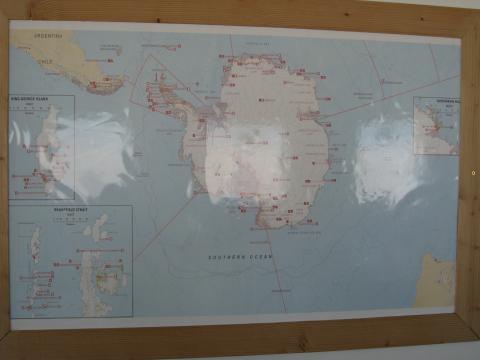Antarctica 2013--2014 Part 6: Antarctic Stations

Several people have asked me about the different stations in Antarctica. This time I'll provide some facts based on a table of the Antarctic stations displayed in the galley. Note that the version here was updated March 2009. More recent information can be found at https://www.comnap.aq/Information/. First the permanent U.S. stations are Amundsen--Scott (South Pole), McMurdo, and Palmer. Their peak populations are respectively 250, 1000, and 43. The total peak population of all stations listed is 4460. I'm not sure what the source of these numbers is. For example, there have been 250 people at Pole during the construction of the new station, Icecube experiment, and South Pole Telescope. However, the main ("Elevated") station can only accomodate ~150. When there are 250 people at Pole it is extremely uncomfortable with the extra people relegated to outlying buildings (often with no bathrooms). Recently the summer population has been closer to 150. The average winter populations of the U.S. stations are 75 (I think the table is high and the real number is closer to 50), 250, and 12, respectively. The total winter average population of Antarctica is 1094.
The next Southernmost station after Amundsen--Scott is Sobral, run by Argentina, at 81 degrees South (peak summer population 7, not open in winter). The largest non-U.S. summer station is Mirny, run by Russia, peak population 169. The largest non-U.S. winter station is Eduardo Frei, run by Chile, winter average population 70.
The table distinguished stations as "Station," "Camp," "Refuge," or "Depot"; however, I am ignoring these distinctions and calling them all "stations."
Prince Harry and group came to station for a brief tour. It was not announced, I think because they were worried about gawking. So I ended up in the same room as the prince for about 10 minutes while he was getting a tour of the science lab.
Next entry will be about the science we are doing here...
- Log in to post comments